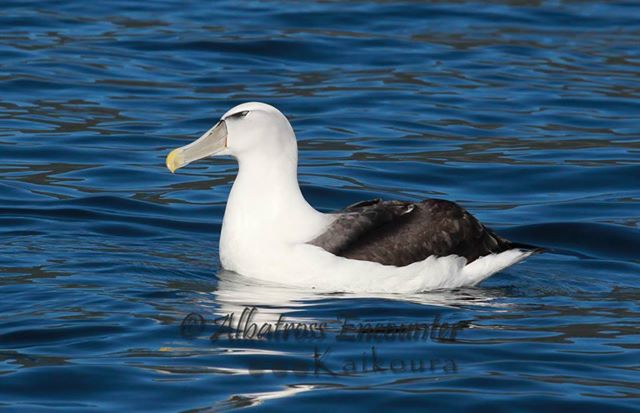"In the country of the blind, the one-eyed man is king" (Wells 1904).
Albatrosses, like most wild animals, are presumed not to be able to survive for any length of time with serious injuries or disabilities. There are exceptions: I have seen an otherwise healthy-looking adult Wandering Albatross Diomedea exulans ashore at Marion Island with one foot bent so far back such that it had to hobble on top of its web. Of course, a broken wing that stopped flight for an albatross would soon be fatal; as, you might imagine would be any problem with eye sight. However, it seems some individual albatrosses are able to survive with only one functional eye as the following examples for three species show.
An adult Laysan Albatross Phoebastria immutabilis blind in its left eye was photographed in the north-east of Kauai, one of the USA’s Hawaiian Islands last year (click here). The bird has been observed courting on a private property over the last two breeding seasons but not as yet commenced breeding. The otherwise healthy-looking bird also had its upper and lower mandibles slightly misaligned and a distorted skull. It is thought that the blindness could have been caused by avian pox contracted from mosquitoes when the albatross was a young chick – which would mean it had survived for several years with one good eye.

One-eyed Laysan Albatross on Kauai, photograph by Hob Osterlund
A White-capped Albatross Thalassarche steadi seen to be blind on its left side was photographed off Kaikoura, New Zealand by the tourist company, Albatross Encounter last December, with pictures placed on its Facebook Page. The bird appeared to be healthy and based on previous sightings had survived for some time.


One-eyed White-capped Albatross off Kaikoura, New Zealand, November 2014
Upper photo showing the bird's blind eye, lower the good eye, courtesy of Albatross Encounter
Another White-capped Albatross with a blind eye was seen off New Zealand’s Stewart Island by Brent Stephenson recently on a sea-watching “pelagic” trip.
Brent also reports to ACAP Latest News of a Chatham Albatross T. eremita seen on 19 August 2006 in "OK condition" alongside a small fishing vessel off Gisborne, New Zealand which was blind in its left eye.

Chatham Albatross showing its blind eye, photograph by Brent Stephenson
Less fortunate was a totally blind Tristan Albatross D. dabbenena chick on Gough Island in 2012 that, although able to be fed and exercise its wings, eventually drowned in a stream near its nest site before fledging (click here). The bird was described as having one pale blue eye with the other closed.
With thanks to Hob Osterlund and Brent Stephenson for information and photographs.
Reference:
Wells, H.G. 1904. The country of the blind. The Strand Magazine, April 1904.
John Cooper, ACAP Information Officer, 21 January 2015

 English
English  Français
Français  Español
Español